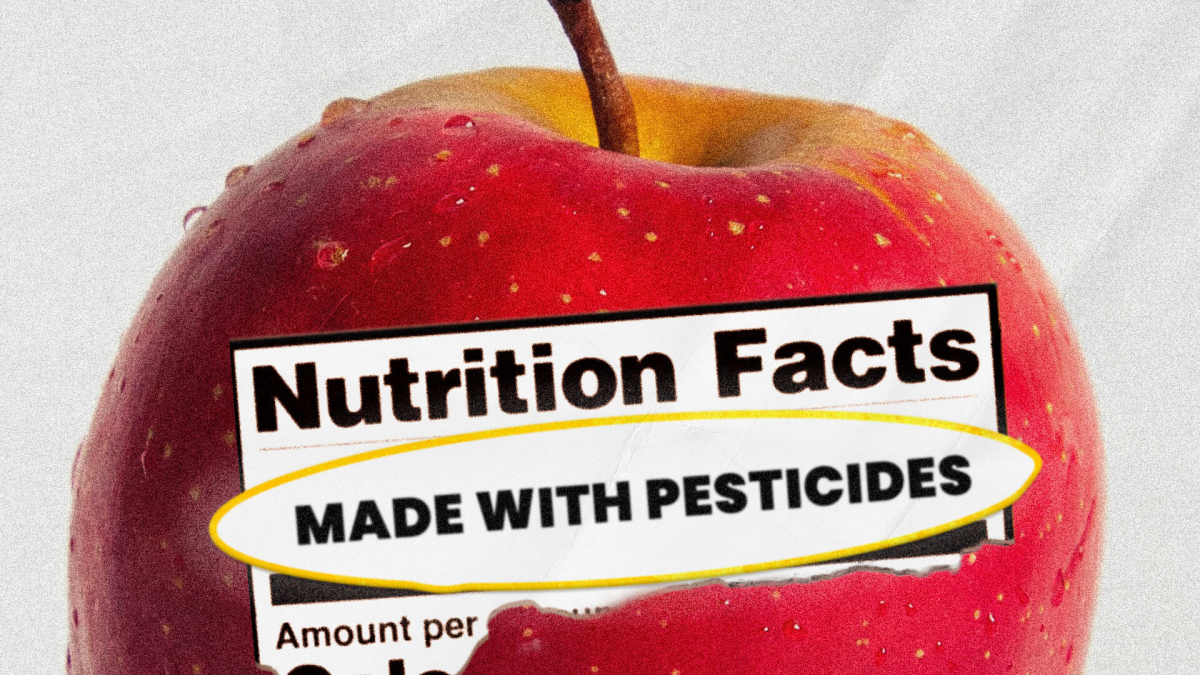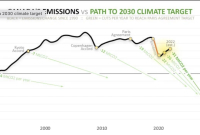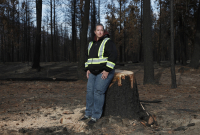Canada falls behind nearly 90 per cent of countries in the world when it comes to banning harmful pesticides, including the European Union and Brazil.
Pesticide bans are enacted by identifying dangerous “active” ingredients, the chemicals that make them effective, not specific pesticide brands. Pesticide products containing those ingredients can be barred from use if deemed dangerous by Canada’s Pest Management Regulatory Agency (PMRA).
Canada’s reluctance to ban harmful pesticide chemicals puts us far behind most other countries in the world.
"We like to present ourselves to the world as being environmentally sensible and really on the ball but actually, we're more talkers than doers," said doctor and past founding president of the Canadians Physicians for the Environment Warren Bell.
The European Union alone has banned or not approved the use of 383 active ingredients, only 28 of which have been banned or prohibited in Canada. Even Brazil's pesticide rules are more stringent than Canada's: The country has banned 131 active pesticide ingredients, nearly five times more than Canada, according to an analysis by Université du Québec à Montréal professor Louise Vandelac.
Pesticides widely used in Canada that are banned in other countries include atrazine, a pesticide that affects the immune system and hormones, which has been banned in Europe since 2004. Canada also lagged years behind the EU in prohibiting harmful pesticides like neonicotinoids, which devastate insect biodiversity, and some pesticides toxic to humans like chlorpyrifos, which officials only banned after years of warnings from their own scientists.
"Bad systems generate bad results — and the system for pesticide regulation in Canada is a bad system," said Bell.
Canada is "among the worst" countries when it comes to effectively regulating pesticides, said Vandelac, adding she is "astounded" by the lenient regulatory approach highlighted by Canada's position far behind other countries. The government should consider more independent research in its evaluation, instead of the current model where officials rely on pesticide companies to provide health and safety data, she said.
Canadian officials take a permissive stance and allow pesticides unless there is proof the chemicals cause harm to the environment or human health, explained Ecojustice lawyer and pesticide specialist Laura Bowman.
In theory, Europe and Canada have similar approaches. Both jurisdictions assess the toxicity of pesticides against the risk that chemicals will leach into the environment or poison people. They diverge when it comes to the risk threshold where they decide a pesticide is too dangerous: Where Europe will err on the side of caution, Canada will not ban a pesticide unless there is "rock solid" proof of harm, she said.
Canada’s mediocre data on pesticide use makes it difficult to gauge where and when pesticides are used and what harm to the environment and human health they might be causing. The government only has rough data to assess how many pesticides are sold in the country each year and doesn't track where or how the chemicals are used. Without this information, it is difficult for regulators to properly assess pesticide risk.
Federal officials have come under fire this year for chronic transparency problems and a lack of independence from pesticide companies. In August, Simon Fraser University professor and public health expert Bruce Lanphear resigned from a prestigious position offering scientific advice to the PMRA citing difficulties accessing the agency's health and environment data and the influence of industry lobbyists.
Last spring, Canada's National Observer exposed roadblocks Canadians face in accessing the agency's health data about pesticides. It also revealed two recent instances where officials refused to seek or assess health data about dangerous pesticides that were eventually banned.
Canada's position tends to be: "We don't have very much information about exposure, so we can assume that not many people are exposed," Bowman said. "That's a function of institutional culture and it's driven by trade pressure" as well.
The U.S. sits with Canada near the bottom of the list when it comes to regulating pesticides, according to Vandelac. That is no coincidence: Canada typically follows the U.S.'s lead in its regulatory decisions around pesticides, Bowman said. Regulators are under "a lot of pressure" to be lenient with their pesticide rules to help the agriculture, forestry and pesticide industries remain competitive.
A spokesperson for Health Canada said in a statement that Canada "remains a world leader in pesticide regulation and its pesticide review process is stringent and fully rooted in science." The organization works closely with regulators in other countries, they said, and is currently in a "transformation process" that will "scan scientific information on a continuous basis … to respond to risks in a timely manner."
Bell remains unconvinced. Canadian officials have a culture of claiming the country is "doing a great job" of keeping Canadians safe, especially compared to the U.S., where social ills like mass shootings are common. But while "we don't shoot people," Canada's pesticides and rules mean Canadians don't "have the (safety) information needed to make good judgments about what they're doing with their lies," he said.






Comments
“The European Union alone has banned or not approved the use of 383 active ingredients, only 28 of which have been banned or prohibited in Canada. Even Brazil's pesticide rules are more stringent than Canada's: The country has banned 131 active pesticide ingredients, nearly five times more than Canada,”
I realize reporting on the chemical industry, like many technical and political topics, is challenging, as is comprehension of the subjects by the lay public. I appreciate this coverage by CNO.
Something that could have been added to the above quote is a mention of the overlap between the banned chemicals in the EU and Brazil and those banned by Canada; as ready as I am to diss the broader, economy-wide, Canadian regulatory regime – our governments are only too happy to drop their pants and bend over for industry – it’s not clear to me that numbers, alone, are a valid proxy for regulatory propriety. Of course, that concern is somewhat (mostly?) assuaged by sourcing expert commentary, such as is done here, and such telling observations as “…the current model where officials rely on pesticide companies to provide health and safety data”.
It would be helpful to get quotes from the 5 leading political parties (LPC, CPC, NDP, BQ, Greens) as to where they stand on this. LPC and CPC, I expect, would be of common mind (in spite of M. Guilbeaut’s efforts) as would, largely, the BQ and Greens. The NDP? I have no idea (which, IMO, is a clue why there is a Green Party).
Is there a typo (Freudian slip? “lies/lives??”) in the last (dodgily-phrased, in any event) sentence?
““Canadians don't "have the (safety) information needed to make good judgments about what they're doing with their lies," he said.”
This is the responsibility of Health Canada.
I have zero faith in HC's ability or concern to act in my or anyone's interests regarding pesticides other than the industry buffoons pulling strings.
It is time for parliament to straighten out this agency from top to bottom.
Health Canada's Pest Management Regulatory Agency (PMRA) is responsible for pesticide regulation in Canada. Under the authority of the Pest Control Products Act, Health Canada: registers pesticides after a stringent, science-based evaluation.
The same genius, wizards at HC recently approved a new chewable nicotine product which can be marketed to children. Even though their website cautions "Nicotine is the chemical that makes tobacco products so addictive. As you introduce nicotine to your body, you will begin to crave more".
Health Canada has approved the sale of flavoured nicotine pouches by Imperial Tobacco Canada Ltd. in such a way that the products can be legally sold to children of any age. Moreover, Imperial Tobacco can promote these products on TV or on billboards across from schools, on social media, through lifestyle advertising, through free samples, and by other means.
On July 18, 2023, a sister company of Imperial Tobacco was given approval to sell flavoured nicotine pouches under the Natural Health Product Regulations, with the products containing nicotine but not tobacco. Imperial Tobacco is now aggressively marketing these nicotine pouches by selling and promoting them in convenience stores and gas stations, with in-store promotions that may be located near candy or chocolate bars. It is completely legal for stores to sell these flavoured nicotine pouches to children of any age.
"Even Brazil's pesticide rules are more stringent than Canada's". Why throw shade at Brazil? Not classy at all!